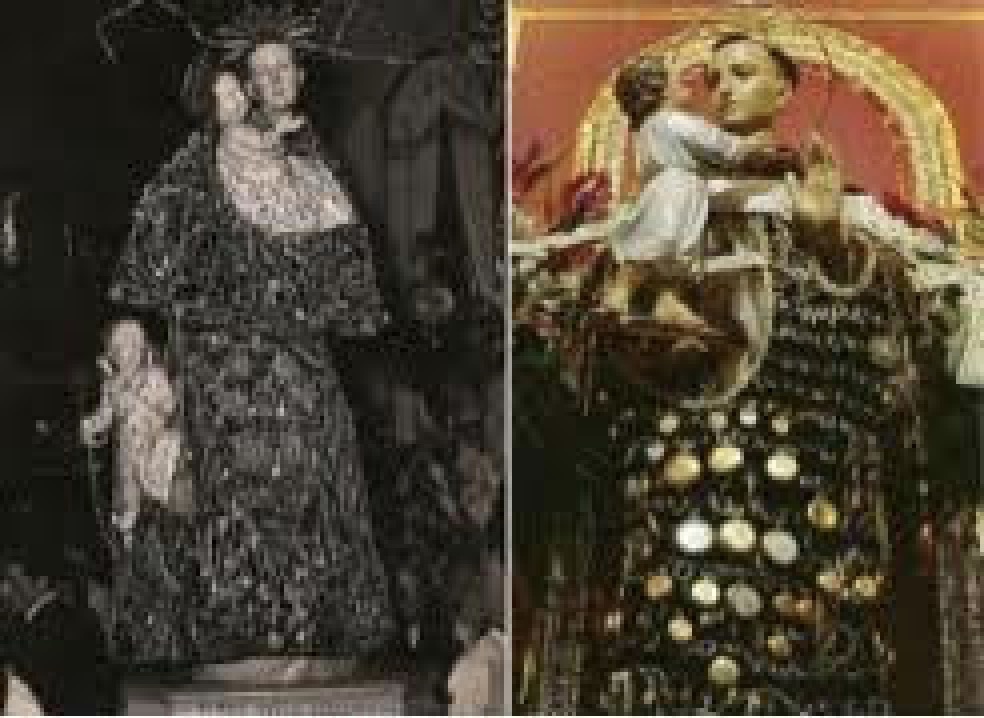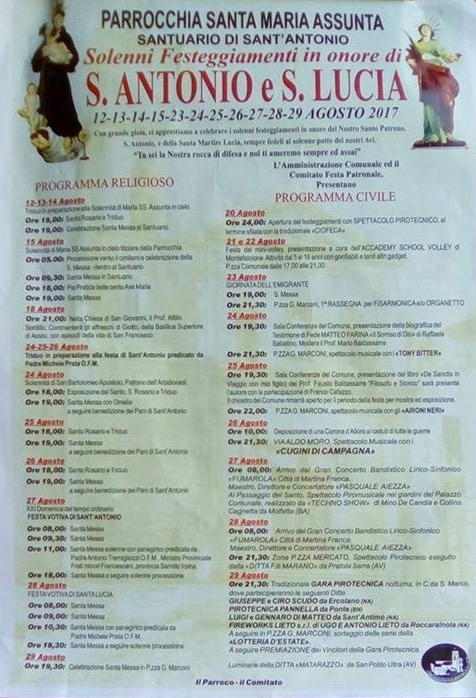
Each summer, hundreds of thousands attend our historic North End festivals. I don’t use the term historic lightly, because that’s exactly what they are. They’ve become something bigger than you or me. The traditions demonstrated during these weekend events grow more impressive with each passing generation. The fact they’ve lasted over a century is extraordinary. That they’ve retained and added to their original fervor is inspiring.
“The Feasts” as they are more simply referred, are one of the last remaining pieces of the old North End. Unlike anything else in this square mile neighborhood, walking through a North End feast is timeless. The year doesn’t matter, not much has changed.
Most of the attention goes to the festive decorations, endless number of food vendors, and colorful parades and processions that make their way across the neighborhood. But a deeper side of these events is the history behind them, the meaning, the purpose.
As a member of the Saint Anthony Society, this week is extremely special to me. My family originated in Montefalcione, Avellino, a town of just over three thousand inhabitants, which sits atop a peak at 1,800 feet above sea level, and where this particular feast tradition began in 1688. To put it in historical perspective, the practice of honoring Saint Anthony on the last Sunday in August predates the United States of America by 88 years. In 1919, Montefalcionesi immigrants to Boston, among them my great-great uncle, Gaetano Guarino, decided to bring a trademark of their hometown to the United States by recreating their devotion to “Sand’ Andonio”. At first merely a manifestation of one hometown, over time, the group and celebration grew larger and larger and began to include devotees of the Saint from across Italy’s many regions as well as non-Italians. This has helped the feast continue to prosper in the 21st century. Further strengthening this celebration of our Patron Saint, our Sunday grand procession of Saint Anthony kicks off at 12 noon, synchronized with Montefalcione’s which begins at 6 p.m. (Six-hour time difference between Italy and Boston)
To articulate what the tradition means to me, in 2013 I produced PATRON SAINT: The Montefalcione Devotion to Saint Anthony. Through the stories of first, second, and third generation Montefalcionesi, the significance of the feast of Saint Anthony is explained. The film was featured on CatholicTV and thanks to its History Department, it had the honor of a special screening at Suffolk University.
On Friday night, as Saint Anthony is revealed for the first time since last August, I remember my society’s founding members, immigrants who had the courage to leave behind the only world they knew to come to the United States with not much more than a pride for their heritage and love for their Patron Saint.
This weekend as you make your way down Endicott Street, keep in mind that the feasts are more than just street fairs, and more than parades. They’re infinitely bigger than all of us.
PATRON SAINT: The Montefalcione Devotion to Saint Anthony





My paternal Great Grandmother was named Feliciana Guarino who immigrated to the North End from MonteFalcione im sure we have some relationship..
Well said Christian! Viva!!
The Feasts have taken an unfair “hit” recently which is totally unfair to the hard working & dedicated men & woman of the societies who keep this wonderful tradition going. Let’s not forget the Feast of St. Lucy on Thursday .Buono Feste!!!!!!!!!!!!!
it may be unfortunate, but it is not unfair. if the feasts want the benefit of closing down public streets for their events, they need to share in responsibility for who their feast attract to the north end.
My grandfather Battista Iantosca came here in 1918 and he was one of the many that started this great tradition to go on in the USA
Its interesting you say how the feast traditions have become more impressive with each generation.
This years entertainment at the feasts included Booty Vortex, Sister Sledge and disco / hard rock music playing at the highest volume for hours and hours each night.
Each night was headlined with hundreds of drunk teenagers creating mob scenes.
Were these traditions brought over from Italy too?
Let’s face it, the feasts are no where what they once were and to say anything different is simply insane. Today’s feasts are about booze and money.
My kids great grandfather was also a founding member . He was Rafaello Sordillo. I also like your explanation of the feast and it’s history. I also think some of the reasons the societies were necessary for the new Italian immigrants should always be remembered.